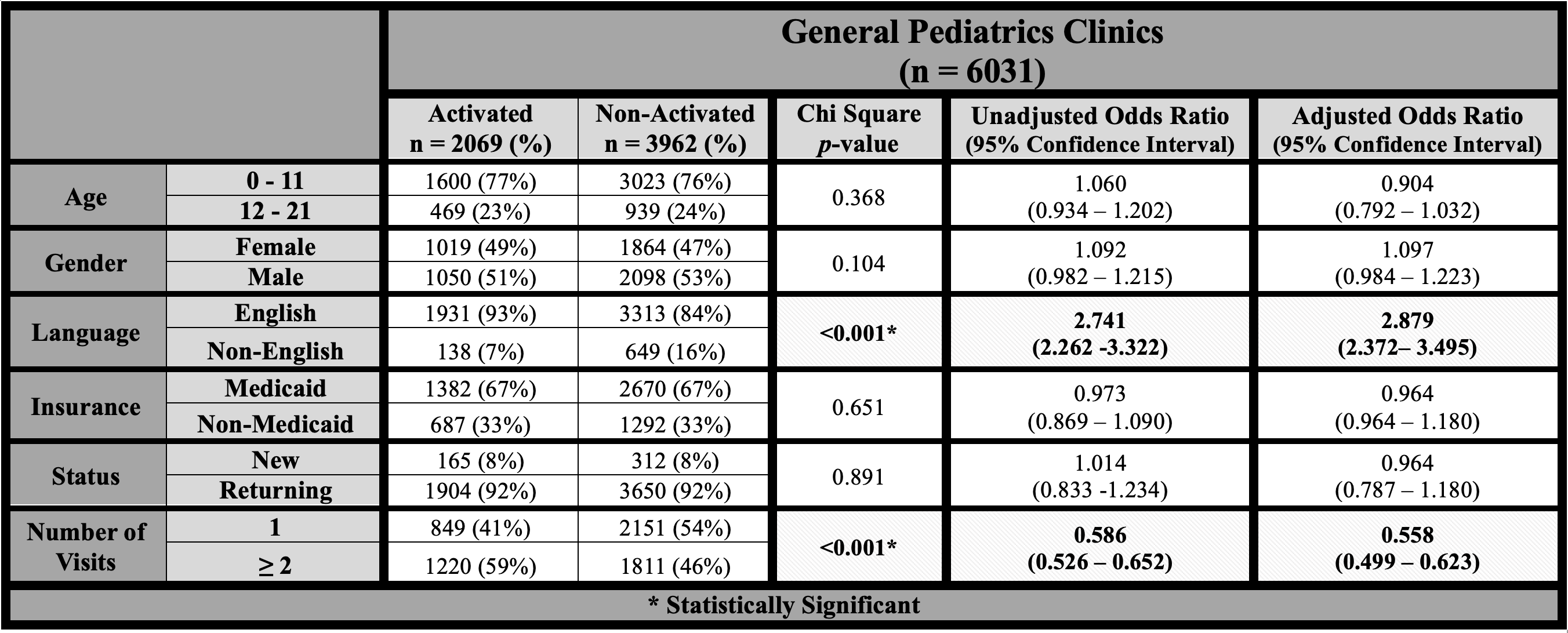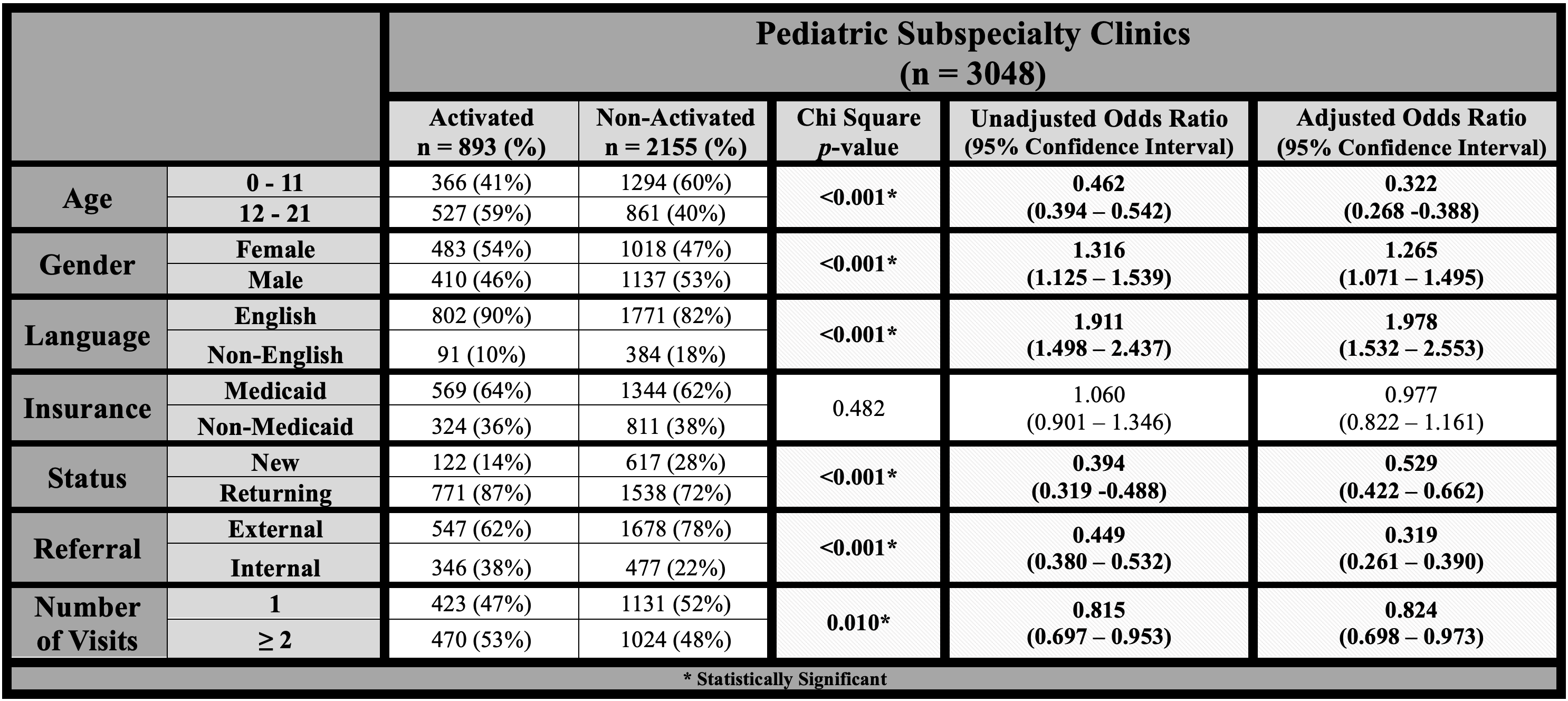Technology
Session: Technology 1
173 - Pediatric Subspecialties Versus General Pediatrics: Differences in Electronic Patient Portal Activation in a Community Hospital Center
Sunday, May 5, 2024
3:30 PM - 6:00 PM ET
Poster Number: 173
Publication Number: 173.2231
Publication Number: 173.2231

Akif Shameem, MD (he/him/his)
Resident Physician
The Brooklyn Hospital Center
Brooklyn, New York, United States
Presenting Author(s)
Background: Electronic patient portals have demonstrated increased patient engagement, patient satisfaction, and improved health outcomes. However, retrospective studies have demonstrated significant disparities in activation across various demographics. Most of these studies were conducted within primary care general pediatric practices; but there is a paucity of data for patient portal enrollment within subspecialty clinics.
Objective: Primary
Aim: To compare patient portal activation between pediatric subspecialty and general pediatrics patients.
Secondary
Aim: To identify barriers to patient portal enrollment among pediatric subspecialty patients.
Design/Methods: We conducted a retrospective chart review to determine the electronic patient portal enrollment status of all patients, between 0 and 21 years of age seen during 2022, in our primary care and subspecialty clinics. We investigated variables including age, gender, language, insurance, new status, source of referral, and number of visits in 2022. Statistical comparisons, including chi-square and odds ratios, were performed utilizing SPSS.
Results: In 2022, our institution had 18,939 total visits across all pediatric ambulatory care centers, comprising of 9,079 individual patients with the majority identifying as Black/African American (56.3%). General pediatrics clinics saw 6,031 patients of which 3,962 (65.7%) had non-activated accounts. Pediatric subspecialty clinics saw 3,048 patients of which 2,155 (70.7%) had non-activated accounts. Pediatric subspecialty patients have higher odds of having non-activated patient portals compared to general pediatric patients.
As shown in the tables, among general pediatric patients, significant factors for non-activation include non-English speakers and less than 2 visits per year. Among pediatric subspecialty patients, significant factors for non-activation include younger patient age, male gender, non-English speaker, new patient status, referrals from outside practices, and less than 2 visits per year.
Conclusion(s): Our results demonstrate significant differences in patient portal activation between pediatric subspecialty and general pediatrics patients and highlight the unique differences in contributing factors of non-activation. Identifying these barriers to enrollment will allow our institution to develop targeted strategies to increase patient portal utilization and thereby improve patient outcomes within our pediatric subspecialty clinics.


.png)
